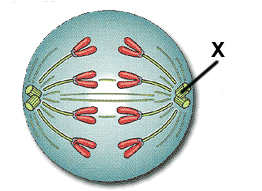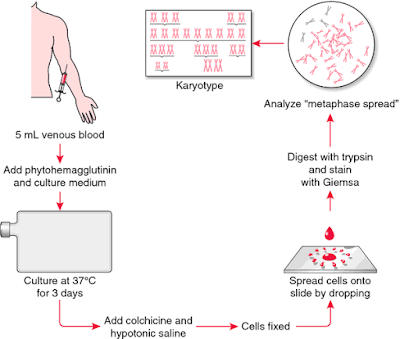A chromosome is marked by a constriction known
as primary constriction. The primary constriction divides the chromosome into
two arms. In the region of primary constriction lies the centromere. It is
associated with granule like structure made of protein the kinetochore, to
which spindle fibers attach during cell division.
 |
| Structure of an Anaphase Chromosome |
A chromosome may have one more constriction. It
is called secondary constriction. The tip of the chromosomes are rounded and
sealed and are called telomeres. The terminal part of the chromosome beyond
secondary constriction is called satellite. Based on the location of primary
constriction and kinetochore, the chromosomes are described as:
 |
| Types of Chromosomes |
Metacentric
These are V-shaped chromosomes, have centromere
in the middle so that the two arms of the chromosomes are almost equal.
Sub-metacentric
These are L-shaped chromosomes with centromere
slightly away from the midpoint so that the two arms of the chromosome are
almost equal.
Acrocentric
These are rod shaped chromosomes with terminal
centromere, so that they possess only one arm.
Telocentric
These are also rod-shaped but with sub-terminal
centromere have one arm very long and the other arm is very short.
Karyotype
When chromosomes are arranged by pairs
according to their size, shape and general appearance in mitotic metaphase it
is called karyotype. It is the total chromosomal complement of a cell. Study of
karyotype is used for the identification of chromosomal number. The figure
below outlines the steps in one method of preparation of a karyotype from a
blood sample. Karyotyping is used to screen the abnormal number of chromosomes
and for defective ones.
 |
| Preparation of Human Karyotype |
No comments:
Post a Comment